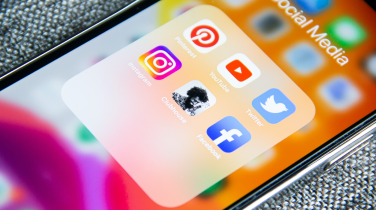Content Marketing vs. Product Marketing: A Definitive Guide
BLOG / Marketing 6 October 2023

The terms “content marketing” and “product marketing” can get a little twisted even for great business owners…
Well, both these terms are very different. Yet, they both serve the same objectives: market your brand, products, and services. It’s just that the way to do that marketing differs in both content marketing and product marketing.
Today, we will look at the age-old debate of content marketing vs. product marketing that can confuse a lot of B2C/B2B marketers and business owners.
What is content marketing?

Content marketing involves creating and distributing high-value content to a target audience. It involves little to no mention of your products/services.
For example, a web design firm can make helpful and high-value content on how to create good website designs that convert. And that’s something we do on our blog…
Similarly, a business that sells an e-commerce solution can use content marketing to provide tips on how to improve sales for its target audience.
The primary aim is to create engaging content that provides value, solves the customer’s pain points, and brings awareness to the product/service offered by your business. A common mistake marketers make, in this light, is that they tie promoting their product/service with the content they produce.
It’s okay to include a passing mention or a link to your website if it makes sense and isn’t out of context. We do place CTAs here and there throughout out content as well… But it doesn’t mean that we can go on and explain the key features of our products/services and reviews from happy customers and an educational piece of content, per se!
This also raises the question of how a business can benefit from content marketing if it can’t actively push its products or services in content.
Well, it all starts with creating content that’s relevant to your business! If your business sells dog food, then the content should center around dog nutrition and anything related to dogs. This production of highly relevant content would then attract your audience and potential customers, which eventually helps you to establish authority and trust in the eyes of potential customers before making the sale.
It also brings your products/services into the limelight, as there’s a good chance a potential customer will look at what you offer after reading something useful!
In short, keep the product and service promotion to a minimum and focus on creating content that’s valuable!
What is product marketing?

As the term implies, the process of marketing your product is known as product marketing. In this type of marketing, the main focus is to convert the target audience into customers.
Product marketing covers everything, including product description, core messaging, customer case studies, product features, etc.
In content marketing, we try to focus on helpful content with little to no mention of the product/service. But in product marketing, the content is built with a laser focus on the products/services.
An example of product marketing is creating a list of your product’s features… This involves everything from the basic features or what makes your product stand out from the competition!
Basically, anything that makes your product stand out and convert the audience into paying customers.
Advantages of content marketing
Now that the blur between content marketing vs. product marketing is settled, let’s look at some major characteristics and perks of content marketing:
1. Build brand authority
We already know that content marketing is about creating high-quality and relevant content for the potential audience. This helps you to develop brand authority and expertise in the eyes of potential customers.
That’s to say, a brand that educates its audience about a product or a service is more likely to provide good content compared to a brand that doesn’t…
This perception of trust and brand authority can help a potential customer convert into an actual customer & even to pick your products over the competition.
2. Improve brand-customer relationship
Another benefit of content marketing is that it helps you improve the brand-customer relationship.
With content marketing, you can create content that truly defines the personality & tone of your brand. This can help the target audience to properly understand the values you represent and what type of brand you are!
Similarly, useful content also helps your brand to keep the customers engaged, which can translate to a better likeness of products/services over others!
3. Cost efficient
Content marketing is cost-efficient and more affordable when compared with other marketing strategies. That’s mainly because content marketing provides long-term value, which can’t be said about paid advertising.
For example, paid advertising can bring traffic & sales, but you need to continue paying for it. But with content marketing, you only need to pay the upfront cost of creating & distributing content. After that, it continues to provide value for a long period of time.
That’s why content marketing often comes with high upfront costs but also with long-term value, while paid advertising comes with continuous costs.
4. Improved search engine rankings
Content marketing can also help you get more traffic from Google, Bing, DuckDuckGo, & other search engines, be it paid or organic. That’s why most brands prefer to keep content marketing a core component of their SEO strategies!
And the best part about doing content marketing for better search engine visibility is that it is more affordable over the long run as compared to other traffic & lead generation channels. This improved positions does translate to more leads, sales, revenue, & an overall higher ROI.
5. Increased brand awareness
Content marketing, according to what’s formerly discussed, can also help you increase brand awareness and visibility. These are essentially key factors when a potential customer looks to buy a product or a service.
For instance, let’s say that a customer wants to buy new fence post for his backyard… The customer would want to learn more about the best available fences in his area and he resorts to a search on Google.
The customer lands on a very insightful article with good images and in-depth explanation of the perks and cons of each fence post type.
Where do you think this potential customer is going to buy the fence posts when he finally makes his mind, your store or someone else’s!?
Advantages of product marketing
Product marketing is all about shedding light on your products and how they can get a job done. But what can be achieved with product marketing?
Let’s take a quick look at some common advantages of product marketing:
1. More sales
A key advantage of product marketing is driving more sales! As mentioned earlier, product marketing is all about highlighting your product’s key features and unique selling points (USPs).
This direct approach makes it easy to educate the users about what makes your product special. And when product marketing is done through the right channels, it helps you attract and convert traffic into sales!
2. Competitive edge
Product marketing done the right way can help you make your product stand out from the competition.
Now you may ask how to do it the right way… Well, make sure that you highlight your product’s unique features, unique selling proposition (USP), benefits, and how it can solve the customer’s pain points.
Accordingly, a great benefit of product marketing is that it enables you to develop a competitive edge over others!
3. Increased brand awareness
Product marketing can help you yield more brand awareness, just like content marketing. The only difference is that you get to talk about your product a lot more as compared to content marketing that focuses on demonstrating expertise.
By highlighting your products’ unique benefits and features, you can market your brand as a trusted and reliable source!
4. Increased market share
Effective product marketing attract new customers and thus increases the overall market share!
However, it is important always to be truthful and only include factual information about your product. Claiming nonexistent benefits my actually deteriorate the customer experience & will lead to a lower market share over time.
5. Better customer satisfaction
Effective marketing of your product’s features & uses ensures the customers know what they are buying beforehand.
As a result, a customer buying your product will be satisfied with their purchase as they will already know what they are getting out of it!
This can lead to better customer satisfaction in the form of positive reviews, increased loyalty, and repeat business over time & lower customer retention.
Channels for content marketing
Content marketing can be done through multiple channels, including:
1. Website and blog
Adding high-quality & helpful content and blogs on websites is a quite popular and effective content marketing practice. Note that this content can be published on your own website, and can also be posted on third-party websites and blogs to get exposed to a new audience. The latter case is also considered a form of content marketing for your own website.
Our website is a good example of the use of content marketing on a website. We are continuously producing high quality technical content to keep users like yourself coming back to our website and getting familiar with it. Of course, with the hope that this would help us do business with you in the future if you decide to jump on a web design, branding, or web development project!
2. Social media
Another popular medium for content marketing is social media! And again, out agency can be a good example of the use of such a medium as we continuously use LinkedIn to market our brand and drive more inbound leads.
With a wide variety of social platforms such as Facebook, Instagram, Pinterest, & Twitter, you can also create and distribute helpful content to reach your target audience. Just make sure you pick the platform where your users are more likely to be active.
It is a known fact that users’ attention span is very low (only 2 seconds) on social media. That’s why it is best to use short content that’s highly engaging, informative, and to the point.
To attract the user’s attention on social platforms, you can also use graphics and videos as part of your content marketing campaign.
3. Email
Email is also a popular medium for content marketing campaigns. It provides a more personal approach to distributing your content to a group of people.
In addition, most email marketing tools offer user segmentation, which can be used to send highly relevant content to groups. This way, you can send personalized content to potential customers based on their specific user journey rather than sending the same content to all users.
If you are not using email as a medium for content marketing, then it is high time to start doing so! In the USA alone, up to 92% of people with internet access actively use email as a form of communication. And by 2026, the number of internet users utilizing email as a communication medium will reach 4.73 billion!
4. Ebooks
Do you want to establish your expertise and trust in the eyes of potential customers? Then you can also integrate ebooks as a medium for content marketing.
Hubspot is a good example of using ebooks as a medium for content marketing. They have 400+ ebooks on their website & all of these ebooks are highly relevant and value-rich for their services’ end users.
You can use ebooks to provide templates, solve problems, or provide an in-depth guide about a topic. And one of the key perks of using an ebook as a content marketing medium is that users can also share it with others, leading to wider brand awareness!
5. Videos
“A picture is worth a thousand words…” I am sure you are already aware of this adage. But what about video?
So, while you work on creating content for websites/blogs and email, do not forget about the video content as well! You can use popular video platforms such as YouTube, DailyMotion, and TikTok to distribute your video content.
In addition, this medium can also be used to add videos to your website and host webinars. If we talk about webinars in particular, they essentially provide excellent opportunity to educate the audience & eventually convert them into customers.
Channels for product marketing
Do you want to do product marketing the right way but not sure what are the right channels? Have a look at some popularly used channels for product marketing:
1. Paid advertisements
Paid advertising overthrow content marketing’s need for time to reach the audience; that’s to say, paid ads help you reach your audience as soon as you pay that cash!
This popular form of product marketing may involve both offline (print media) and online sources (PPC, PPV, Social, etc.). The main goal of utilizing paid ads for product marketing is to generate sales.
2. Press releases
From announcements of new products released by your brand to product updates, all of these can be achieved with press releases.
A press release provides a cost-effective solution for distributing content to different websites. It also provides greater product visibility by reaching a wider target audience.
3. Case studies
Case studies can also be used as a medium for product marketing as they enable you to share actual data related to your product.
One of the key benefits of using case studies for your products is that they can highlight the value of your products & how customers reaped benefits after using them.
4. Infographics
Infographics can be used to visually highlight the key features of your product & how it can be used to solve a customer’s problem.
One of the added benefits of using infographics is that they can be easily distributed to different websites and platforms. In addition, users tend to give more attention to visual content as compared to simple text!
And last but not least, infographics make it easy to represent information in an easy-to-digest manner.
5. Landing pages
A landing page is specifically built with one goal in mind: to convert the incoming traffic into customers. That’s why another good medium you can use for product marketing is a landing page.
You can use a landing page to highlight your product’s key features, comparisons, and other relevant information! Basically, anything that can convince a user to buy your product can be used on a landing page.
Conclusion
As a business, you shouldn’t think about content marketing vs. product marketing as if you only have to choose one… Instead, you should consider both of these marketing techniques as something that should be used hand in hand!
This will allow you to improve brand-customer relationships, brand awareness, generate more sales, and much more! The only thing you need to keep in mind is not to confuse content marketing and product marketing with each other.
This will allow you to do both of these things (content marketing & product marketing) the right way!





